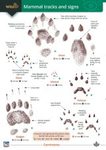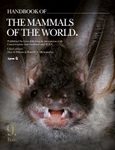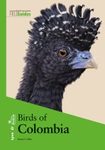A landmark publication for mammals, useful reference for mammals watchers
By
Gehan de Silva Wijeyeratne
8 Oct 2023
Written for Hardback
This book marks another significant milestone in natural history publishing. For the first time ever, within the covers of a single book, one has good-quality illustrations with a distribution map of all the known species of extant wild mammals. At the time of publication, this numbers 6,459 species in all, a number which will keep growing. The book includes 103 extinct species and 19 domestic species, covering 6,581 species in total. The material in the book is mind-boggling with 7,439 illustrations covering sexual dimorphism and distinctive subspecies and morphs and 6,459 distribution maps.
I cannot help feeling a ripple of excitement when I thumb through All the Mammals of the World (AMW). It is a special book and a world first. Wow, all the mammals of the world as it says on the tin. In addition to natural history books, I also enjoy popular science books on physics and astronomy. At the time of writing, the mainstream TV news has been covering exciting developments in scientists bottling anti-matter in terrestrial experiments and a renaissance in lunar and space exploration. In a way, it is disquieting that the first really decent effort to contain the most popular group of animals, the mammals, within the pages of a single book, has happened only now. Furthermore, it is notable that this is not from a government agency with a multi-million dollar budget, but from a relatively small and specialist publisher in Barcelona. The story of Lynx Nature Books (descended from Lynx Edicions) is a ‘made for a movie’ story in itself of a small, heroic band of people who have had a global impact by bringing together science and the popular appetite for natural history books on a commercially viable business model. In a wider context, this book is a remarkable achievement, not just in natural history publishing, but in the human story of how we catalogue what we have on this precious and imperilled planet. As has often been said, it is hard to conserve without first naming and illustrating what we have and understanding their distributions. Books such as this become a part of the conservation toolkit.
I don’t expect the average person to get excited with the artwork on the rats and mice. However, many of the plates, at least of the larger and more distinctive mammals, have a certain aesthetic appeal, especially if you are pre-disposed towards natural history illustrations or mammals. It is a pleasurable exercise to thumb through the book at random and see the colourful and wonderful diversity of mammals. One cannot but help daydream of the exciting mammal-watching expeditions one can indulge in, oh if only one had the time and money. Or to reminisce on past field trips and to check if a mammal you have seen before has now been split into a new species.
This book is the culmination and only possible as a result of the Handbook of the Mammals of the World (HMW) series which in 9 volumes was published in the ten years between 2009 and 2019. Some of the thunder for this book was stolen by the two-volume Illustrated Checklist of the Mammals of the World, with Volume 1 (631 pages) and Volume 2 (535 pages) totalling 1,166 pages. AMW has the same shape 24 × 31 cm as the HMW and weighs in at a hefty 4.6 kg. This is not a book you will be taking around in the day pack, but probably one that will be consulted regularly if you are one of the fortunate people who can indulge in a lot of wildlife-centric travel.
The new single-volume book at 799 pages means it is 367 pages less compared to the Illustrated Checklists. So, something has had to give way. The loss of information is largely in the taxonomy notes being removed, to make the new single volume slimmer and also more appealing to a wider audience. This is a sensible compromise as readers who are interested in taxonomic references such as those in academia and those who write and photograph field guides like me can consult the earlier work or look up papers online. However, the new book is not a simple reduction of the Illustrated Checklists. Firstly, the taxonomy has been updated. Secondly, the book contains 107 newly described species and 106 split species. Thirdly, it has 37 pages of world atlas maps, a feature seen in other Lynx books. I like the atlas pages as they are useful to use in conjunction with the postage stamp-sized, species distribution maps. The references have been severely pared back, but again this is not a huge loss given the more populist audience that is being targeted.
The front sections (pages 1 to 30) and end sections (pages 697 to 799) are not small totalling 130 pages, but are less than a fifth of the book with the bulk of the book being devoted to the species accounts. The species accounts are largely pictorially driven and follow a standard structure with each species having its English common name and Latin name being given prominence with names in French, German and Spanish also provided. The IUCN conservation status is provided as well as key measurements on length and weight and whether a species is monotypic or has distinct subspecies. The distribution map, often supplemented with abbreviated text, is probably the most useful piece of information to most mammal enthusiasts. A picture is worth a thousand words and the maps which show the worldwide distribution of a species make it very easy to see if a species is confined to a country, continent or island. It also makes it easier to unravel some of the recent taxonomic splits. However, as in the HMW series, the distribution of subspecies is not marked on the maps. I suspect this is because this would have been too great an undertaking given how volatile subspecies classifications are with ongoing molecular work.
Post-COVID-19, I have visited West Africa and East Africa. For various reasons, most mammal field guides are quite dated at the time of writing and I found this book quite useful to quickly get a handle on the current taxonomic treatment of species. Even with larger mammals such as the Vervet Monkeys (genus Chlorocebus) and Red Colobus Monkeys (genus Piliocolobus) this book was a useful reference to be exactly sure of what I had photographed.
Outside of rodents such as rats and mice, and other smaller mammals such as the bats, many of the other mammals if seen in the field can often be narrowed down to species level using the illustrations and the distribution maps. An electronic version that can be viewed on a phone app would be a handy product extension given that the book itself is too heavy to be taken around. If you already have the nine-volume Handbook of the Mammals of the World and the two-volume Illustrated Checklist of the Mammals of the World, do you still need this book? I suspect most mammal enthusiasts would want to complete the collection of titles as there is no knowing when another single compendium will supersede this remarkable book.
15 of 16 found this helpful
-
Was this helpful to you? Yes No





















![How to Find and Identify Mammals [Revised Edition]](http://mediacdn.nhbs.com/jackets/jackets_resizer_medium/21/210208.jpg?height=150&width=106)


















